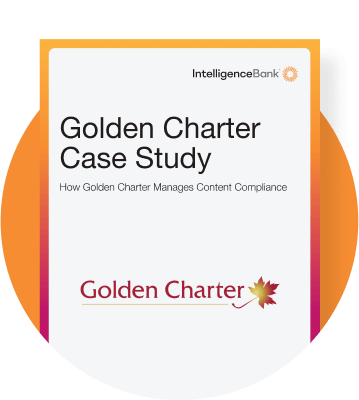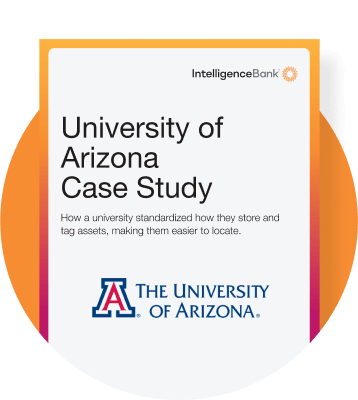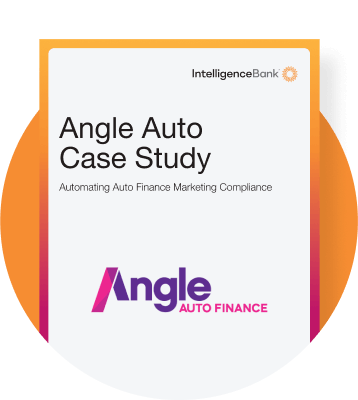If marketers needed an emergency backup career, they’d be archaeologists — for all the wrong reasons. While no related job description ever mentioned “digging” as a core skill, marketers spend a fair amount of time extracting digital artifacts from disorganized folders and carbon dating them to see if they comply with the latest regs.
Thankfully, IntelligenceBank has set about resolving this workflow woe. With digital asset management (DAM) software, teams can store, update, and distribute files in one place — then spend more time doing their actual jobs.
What Is Digital Asset Management Software?
But to understand the benefits of DAM software, we first need to understand what Digital Asset Management is. A digital asset is any file of value stored electronically — such as images, videos, audio, documents, designs, and branded content — that appears across websites, campaigns, and social media.
Digital Asset Management (DAM) software centralizes the storage, organization, and distribution of these files. It lets users:
- Store, search, and download assets in multiple formats
- Automatically convert files into new types
- Manage metadata such as titles, descriptions, and copyright info
- Use AI for smart tagging, facial recognition, and instant search
- Control asset versions, rights, and permissions
By providing a single source of truth, a DAM ensures every team — Marketing, Legal, Compliance, and Sales — works with the most current, approved content. For franchisors, it enables self-service while keeping assets on brand and compliant. HR teams can manage employee content, while PR can share media-ready assets via direct links.
Ultimately, DAM software streamlines collaboration, shortens time-to-market, and eliminates time spent searching or verifying assets — freeing teams to focus on strategy rather than administration.
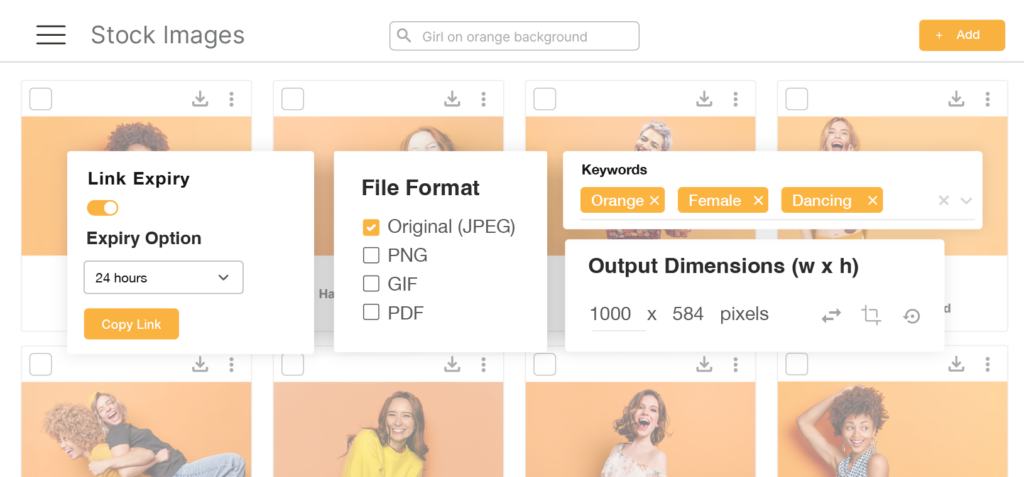
How Do Digital Asset Management Programs Fit Marketing Workflows?
It’s not uncommon for Marketing to get tangled in a web of disorganized assets. Decoding which asset is final, what the talent rights are or its approval status can (and does) chew up hours of time. While a DAM does catalog and manage digital assets, it’s more than a glorified filing cabinet. A DAM threads into the production workflow from brief to completion. For example, supporting creative assets can be linked to briefs, drafts can be run through markups and approvals and pushed out to media and web platforms.
Here are a few examples:
Email marketing workflows
EDM campaigns are only as effective as the assets behind them. But in a manual setup, fragmented folder allocation causes production drags. A DAM system plugs directly into email marketing systems, letting your team pull approved assets straight from the source. By cutting search time, DAM software frees marketers up to focus on crafting persuasive, on-brand messages. Everything stays version-controlled and compatible with your brand’s identity, so you’re not accidentally sending out last year’s promo with last decade’s design choices.
Social content creation
The fastest way to kill engagement is by repeating yourself. When social teams are cornered into recycling the same content, it’s usually because they lack a common hub for asset storage. And when it’s not replicating content, it’s scrambling for last-minute fixes. Everyone knows this jeopardizes brand consistency and compliance.
A DAM gives you a centralized library for social teams to retrieve fresh, brand-approved material faster. Visualize asset usage with tagging and organization tools to keep socials laden with assets hot off the fire. Beyond that, locate digital content data, like file size and aspect ratio, so teams post compatible media on the right platforms. Design will thank them for that.
Visual design and written content collaboration
Marketing is a messy, multi-format process. Writers draft their copy, designers create the visuals, and everyone bats their revisions across a host of platforms. Assets can get lost in translation. This eats up unnecessary time — and nobody in marketing needs that. A digital asset management platform integrates directly with web and design tools like WordPress and Adobe Creative Cloud, so Design, Marketing, and Compliance can all co-produce from the same playbook throughout the campaign.
With real-time proofing and markup, all collaborators can comment and approve creative assets within a structured workspace — without the usual tug of war.
Brand management
A strong brand is built on consistency. When team members pull assets from shambolic sources, the inconsistency dilutes your brand identity. Your DAM software houses approved logos, templates, and guidelines available in their most recent versions, which removes branding and design teams’ guesswork. Version control and automated updates mean everyone has access to (and therefore works from) the same standards. Say ciao to accidental font swaps and off-brand coloration, and instead, reinforce your brand’s integrity.
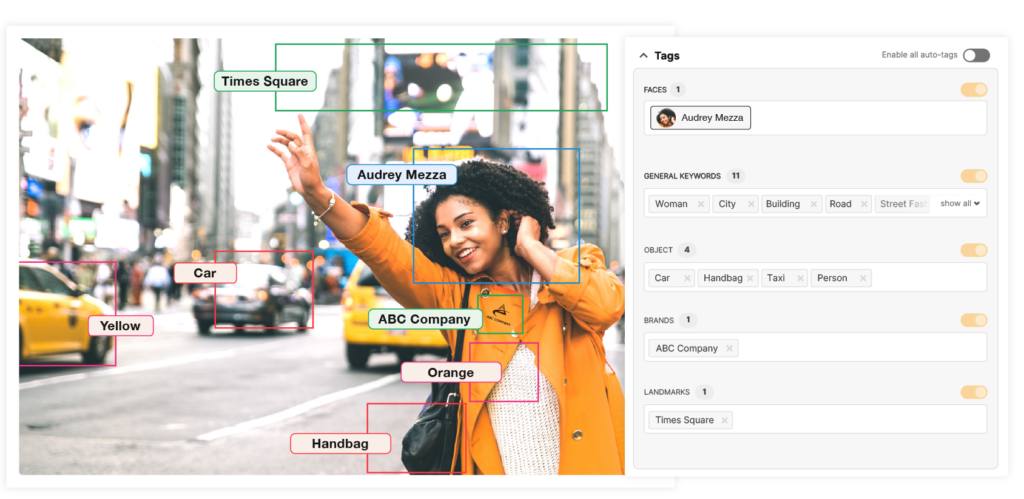
How Do You Evaluate Digital Asset Management Programs for Marketing?
Choosing a digital asset management system goes deeper than finding a digital library to store your brand’s creative files. It’s about finding one that sets the stage for frictionless workflow, allowing for self-service, collaboration, transparency and connectivity.
If you’re considering a DAM to replace disjointed folders and counterproductive emails, you’ll want to evaluate your options strategically. Here’s a step-by-step guide to finding the right fit:
1. Perform internal research and audits
Before diving into vendor demos and flashy feature lists, take a hard look at your existing workflow. What’s working? What’s not? What tasks drain your team’s time?
Start by gathering input from everyone who touches your marketing assets: designers, content creators, campaign managers, and compliance teams. You’ll quickly identify common frustrations like:
- Struggling to locate the latest version of an asset
- Manually sending files across teams for feedback
- Inconsistent branding across platforms
- Compliance headaches with outdated disclaimers
- Slow approval processes that delay campaigns
A DAM is supposed to eliminate these marketing workflow bottlenecks, so understanding your pain points helps you pick a system that actually fixes them.
2. List must-have and nice-to-have features
Now that you’ve identified where your workflow breaks down, it’s time to create two lists of features that address workflow lapses. Think about:
Must-have features: The non-negotiables that will directly solve your biggest operational challenges.
Nice-to-have features: The bonuses that could enhance efficiency but aren’t critical to your line of attack.
You can use our Request For Proposal (RFP) template as a way of checking off what features are available for now and future needs. By clearly defining priorities, you’ll prevent yourself from being swayed by impressive-looking but unnecessary features and focus on what truly impacts your workflow.
Below are some ideas to get you started.
Integration
Does the digital asset management platform integrate with your marketing stack? Seamless connections with tools like Adobe Creative Cloud, Shopify, WordPress, and Mailchimp can drastically improve efficiency.
Scalability
Your DAM should grow with you. Tune into your immediate and long-term growth goals and consider whether it can keep up with increasing asset volume, more users, and new workflows.
Approval workflows
A strong digital asset management workflow should automate and streamline the approval process, so assets fluently move through review cycles. Look for:
- Automated reminders
- Customizable permissions
- Version tracking
- Custom workflows
Access control
Marketing teams work with internal staff, freelancers, agencies, and external partners. Ensure the DAM has granular permissions, so the right people can pull up the right brand assets — without compromising sensitive data.
Version control
Some teams have an awkward knack for accidentally publishing outdated logos or old product images. Then they invented version control. This tool ensures all players can retrieve the most up-to-date assets. But don’t worry, you can keep past versions available for reference.
Security
Digital assets are valuable and security breaches can be catastrophic — particularly in a highly regulated industry like healthcare or fintech. Look for role-based access, watermarking, and audit trails to protect your files from unauthorized use. It’s also a good idea to check data governance capabilities to ensure information is secure and available.
AI-powered search and tagging
Ever wasted half a day looking for one image? Hopefully, that one made it to your list. AI-powered tagging and metadata management simplify media asset search. They let you find assets based on keywords and campaign names, or image recognition.
Facial recognition and smart organization
If your brand produces a high volume of visual content, facial recognition technology automatically tags images with people’s names, making it way easier to find relevant shots without manual sorting.
3. Evaluate your options
Now that you have a clear idea of what you need, start narrowing down your options. There are a lot of DAM solutions out there, ranging from simple cloud-based storage platforms to enterprise-level workflow engines. Score each potential platform against your desired features. Consider:
User experience: Is the interface intuitive, or does it require a PhD in system navigation?
Implementation time: How long will it take to roll out and train your team?
Customization: Can you tailor workflows, metadata fields, and approval processes?
Customer support: Are you getting a dedicated rep or just a generic help desk email? How long can you access support?
The best DAM isn’t necessarily the one with the most features. It’s the one that fits your team’s needs and workflow.
4. Research vendors
Once you’ve shortlisted your options, read reviews and testimonials to get a broader idea of the vendor’s customer experience priorities. Ultimately, due diligence will save you from investing in a system that seems great on paper but lacks real-world support.
First, make sure you’re getting solid customer support with your program. 24/7 access is best — especially if the service provider is offshore. If they only offer support during business hours, is this likely to create any roadblocks that an overnight fix could bypass?
Second, check out the extent of onboarding training and implementation support. While migrating to new tools will always cause some level of temporary disruption, a good vendor will go out of their way to keep it at a minimum.
Finally, what kind of product updates can you expect, and at what intervals? Cloud-based solutions are relatively simple to update, but if you’re going for local hosting, it’s worth checking out what it takes to keep your tech current.
5. Try demos
Never commit to a DAM without seeing it in action first. Most providers offer live demos, and this is your chance to see how intuitive and functional the digital experience really is. Have a dig around to explore:
Searchability: How intuitive is it to find specific assets with filters, tags, and AI search?
Workflow automation: Can you set up or customize approval processes that match your current workflow?
Speed: Does it lag when handling large digital file uploads or many users at once? How does that sit with your operational flow?
Have multiple team members participate in the demo — what works for a marketing manager might not work for a designer or compliance officer.
6. Consider cost over time vs. ROI
Digital asset management platform pricing varies wildly. Some charge per user, others by storage volume, and some use a flat-rate model. But the real question is: How much time (and money) will it save your team in the long run?
Also, think beyond the first year. Will the DAM still meet demands as your business grows? Certain platforms scale easily, while others get more pricey as you add users or storage. Look for a system that balances affordability with flexibility, so you’re not cornered into expensive migrations down the line.
While the upfront costs can put the “ow” in “cash flow,” a DAM that speeds up approvals, reduces rework, and eliminates asset searches will easily pay for itself in time saved alone.
7. Think about ease of implementation
The best DAM in the world won’t help if it takes eons to implement and half your team doesn’t use it. Ask vendors about:
Onboarding resources: Do they offer guided setup, tutorials, and training?
Customization requirements: Will it work out of the box, or do you need extensive setup?
Adoption support: Do they provide change management strategies to get buy-in from your team?
The goal is a system that integrates smoothly into your existing workflow without a painful transition period.
8. Choose the best fit
By now, you should have a front-runner — or at least a close call between two. The right DAM is the one that melds with your team’s workflow, integrates with your existing tools, and actually makes your life easier.
A DAM is only as good as its adoption
The best system in the world won’t help if your team doesn’t use it. This is where a strong vendor customer success team is vital. They will help you get buy-in early, train thoroughly, and integrate it into daily workflows so you realize the full benefits. When done right, a DAM is the best tool for scaling content, making cross-functional collaboration second nature, and ensuring your marketing keeps pace with the market.
What Else Should You Know About a Digital Asset Management System?
How important is compliance in DAM?
Short answer: extremely.
Long answer: If you’re still managing approvals through a messy email thread or hoping everyone remembers brand guidelines and usage contracts, you’re playing with fire. A DAM secures compliance with automated expiration dates and version tracking, making it borderline impossible to accidentally distribute outdated or legally questionable assets.
How does DAM differ from traditional folder-based methods?
Let’s get one thing straight — if you’re still relying on a labyrinth of shared drives or that one person who knows where everything is, your strategy has space for improvement. A DAM removes the treasure hunt by centralizing everything, complete with AI-powered search, automated workflows, and built-in approvals. It’s the difference between painstakingly prying through cluttered folders and actually finding what you need.
Want To Review Digital Asset Management Systems?
A digital asset management program helps clarify marketing workflows by keeping brand assets organized and manageable in one central hub. With customizable game plans, you can streamline proofing, markups, compliance, and approval processes, and get everyone collaborating in the same space.
IntelligenceBank offers a digital asset management tool for marketing teams ready to refine workflows and drive real results. Let’s boost your asset management and scale operations together.
Contact us to find out more.



